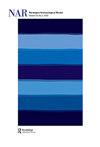充满活力的理论
IF 0.8
3区 历史学
0 ARCHAEOLOGY
引用次数: 0
摘要
Gavin Lucas和Chris Witmore提出了一个问题,即在没有“范式”的情况下,对理论的承诺意味着什么我们回答了他们的问题,并试图参与和批评他们提供的答案,重点关注三个相互关联的领域:首先,他们对“强”与“弱”理论的描述;其次,他们将以对象为中心的方法提升为对早期“自上而下”解释模式的纠正;第三,他们对关联性作为一个突发过程的讨论。最后,我们对考古学理论的未来有一些自己的想法。本着“慷慨的解释学”(Preucel 2021)的精神,我们寻求进行富有成效的对话,认真对待他们的想法,并提供我们自己的观点,这些观点深受我们对实用主义的承诺和对符号学的兴趣的影响。Lucas和Witmore首先反思了过去二十年来该领域的不统一。他们认为,虽然理论可能还没有“死”(Bintliff和Pearce,2011年,Thomas,2015年),但试图在单一、总体范式下综合知识的宏大理论时代似乎已经结束。他们对新范式的论点持怀疑态度(例如Kristiansen 2014),认为我们已经进入了一个阶段,性别、能动性和物质性等概念和思想正在取代马克思主义、结构主义、过程主义和后过程主义等方法。他们认为这种理论多元主义是范式驱动的,因为它依赖于模型、模式和先例,并试图挑战我们更深入地思考理论所做的工作。然后,他们区分了“强”和“弱”理论(借用Sedgwick 1997)。他们认为,强大的理论的特点是我们教给本科生的“所有这些主义和技术”。把东西放在现成的盒子里是一种满足先验想法的方式,这是一种高压手段。他们断言,长期以来,考古学家一直依靠典型的有力理论来让“沉默的石头说话”相反,他们提倡弱理论,这种方法“在面对事情时犹豫不决,甚至在情况允许的情况下走上不同的道路”。他们引用的Pétursdóttir和Olsen(2018,第105页)将弱理论描述为一种“用信任和亲和力取代怀疑和偏执,从而变得脆弱和多变”的理论虽然许多“强”理论确实可以是限制性的和禁止性的(例如选择论),但我们看不到他们对“弱理论”的理解如何在过去三十年中改善许多考古学家倡导的方法。事实上,这些早期的方法,无论是被描述为“解释学”(Hodder 1991)、“前后衔接”(Wylie 1989)还是“符号学”(Preucel和Bauer 2001),都承认解释行为是暂时的、开放的本文章由计算机程序翻译,如有差异,请以英文原文为准。
Vibrant Theory
Gavin Lucas and Chris Witmore pose the question of what a commitment to theory means in the absence of ‘paradigms.’ We take up their question and seek to engage with and critique the answer that they offer, focusing on three interrelated areas: first, their characterization of ‘strong’ vs. ‘weak’ theory; second, their move to elevate an object-centred approach as a corrective to earlier ‘top-down’ modes of interpretation; third, their discussion of relevance as an emergent process. We close with some thoughts of our own about the future of theory in archaeology. In the spirit of a ‘hermeneutics of generosity’ (Preucel 2021), we seek to engage in a productive dialogue where we take their ideas seriously and offer our own perspectives that are strongly coloured by our commitment to pragmatism and our interest in semiotics. Lucas and Witmore begin by reflecting upon the disunification of the field over the past two decades. They suggest that while theory may not be ‘dead’ (Bintliff and Pearce 2011, Thomas 2015), there seems to be an end to the era of grand theories that sought to synthesize knowledge under a single, overarching paradigm. Sceptical of arguments for new paradigms (e.g. Kristiansen 2014), they make the case that we have entered a phase where concepts and ideas such as gender, agency, and materiality are supplanting approaches such as Marxism, structuralism, processualism, and postprocessualism. They regard this theoretical pluralism as paradigm driven in the sense that it relies on models, patterns, and precedent and seek to challenge us to think more deeply about the work that theory does. They then make a distinction between ‘strong’ and ‘weak’ theory (borrowing from Sedgwick 1997). Strong theory, they argue, is characterized by ‘all those – isms and ologies’ we teach our undergraduate students. It is heavy-handed and acts to place things in readymade boxes as a way of satisfying a priori ideas. They assert that for far too long, archaeologists have relied on paradigmatic strong theories to make ‘mute stones speak.’ They advocate instead for weak theory, an approach that ‘hesitates in the face of things and even sets out on a different path should the situation deem it.’ Pétursdóttir and Olsen (2018, p. 105), whom they cite, characterize weak theory as a theory ‘that replaces suspicion and paranoia with trust and affinity, and as a result becomes vulnerable and mutable.’ While it is true that much ‘strong’ theory can be limiting and proscriptive (e.g. selectionism), we do not see how their understanding of ‘weak theory’ improves upon the approaches advocated by many archaeologists over the past three decades. Indeed, these earlier approaches whether they be characterized as ‘hermeneutics’ (Hodder 1991), ‘tacking back and forth’ (Wylie 1989), or ‘semiosis’ (Preucel and Bauer 2001), all recognize the act of interpretation as provisional, open-ended, and
求助全文
通过发布文献求助,成功后即可免费获取论文全文。
去求助
来源期刊

Norwegian Archaeological Review
ARCHAEOLOGY-
CiteScore
2.10
自引率
0.00%
发文量
13
期刊介绍:
Norwegian Archaeological Review published since 1968, aims to be an interface between archaeological research in the Nordic countries and global archaeological trends, a meeting ground for current discussion of theoretical and methodical problems on an international scientific level. The main focus is on the European area, but discussions based upon results from other parts of the world are also welcomed. The comments of specialists, along with the author"s reply, are given as an addendum to selected articles. The Journal is also receptive to uninvited opinions and comments on a wider scope of archaeological themes, e.g. articles in Norwegian Archaeological Review or other journals, monographies, conferences.
 求助内容:
求助内容: 应助结果提醒方式:
应助结果提醒方式:


